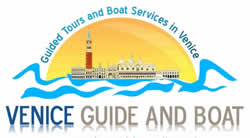Venice Useful Information
Venice Guide and Boat offers some Useful Information and tips you might need during your visit to Venice. More information can be found on the most popular guide books. Please find some suggestions visiting our “Recommended books on Venice” web page.
Street Directions
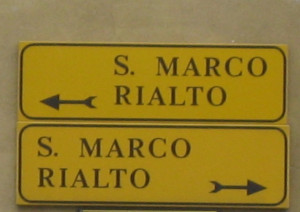 If you are exploring the City by yourself, you might get the feeling that you will soon get lost. Don’t worry! A detailed map is all you need to get orientad.
If you are exploring the City by yourself, you might get the feeling that you will soon get lost. Don’t worry! A detailed map is all you need to get orientad.
You will find everywhere yellow placards pointing out the direction of the main landmarks, such as S.MARCO (St. Mark’s Square), RIALTO (the Rialto Bridge), ACCADEMIA (the Accademia Galleries), FERROVIA (the railway station), P.LE ROMA (Piazzale Roma, the car terminal)
______________________________________________________________________________________
Streets Names
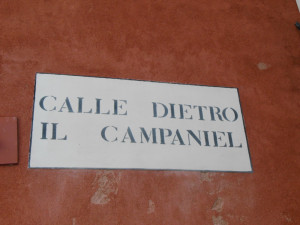 These white signs rimmed in black are commonly called “nizioleti”, meaning small linen sheets, and they are painted on the house walls at the hight of the ground floor ceiling. and give you the name of a street or of a square (campo).
These white signs rimmed in black are commonly called “nizioleti”, meaning small linen sheets, and they are painted on the house walls at the hight of the ground floor ceiling. and give you the name of a street or of a square (campo).
Venetian dialect is applied to local names so you might encounter some inconsistencies in spelling between street signs and guide books.
______________________________________________________________________________________
Gondola
 The fee for a regular gondola ride is 80 euros for 35 minutes. The price is the same up to six persons, the maximum a gondola can carry . If you take the gondola ride after 7.00 pm the price slightly higher.
The fee for a regular gondola ride is 80 euros for 35 minutes. The price is the same up to six persons, the maximum a gondola can carry . If you take the gondola ride after 7.00 pm the price slightly higher.
There is one thing about gondola tours that you need to know: gondoliers don’t sing! If you would like a serenade to be played for you, you have to consider an extra charge and book a singer and a musician it in advance.
______________________________________________________________________________________
Traghetto
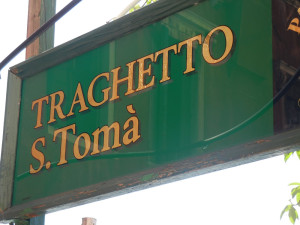
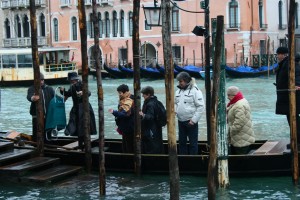 Gondolas are still use as a public mean of transportation. Along the Grand Canal you can find the Traghetto, or gondola-ferry station: this is where you can board a gondola to be ferried on the other side of the Canal for 2 euro.
Gondolas are still use as a public mean of transportation. Along the Grand Canal you can find the Traghetto, or gondola-ferry station: this is where you can board a gondola to be ferried on the other side of the Canal for 2 euro.
It’s not as romantic as a gondola ride, but it’s much cheaper and still a great experience.
______________________________________________________________________________________
Museums Card
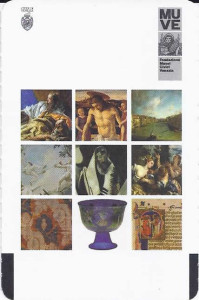 If you visit the Doge’s Palace, you will buy the ‘City Museums of St Mark’s Square’ which provides access not only to the Doge’s Palace, but to all the four museums located around the Square of Saint Mark. The other three museums are the Correr Museum, the Archeological Museum and Saint Mark’s Library, also called the Sansoviniana Library.
If you visit the Doge’s Palace, you will buy the ‘City Museums of St Mark’s Square’ which provides access not only to the Doge’s Palace, but to all the four museums located around the Square of Saint Mark. The other three museums are the Correr Museum, the Archeological Museum and Saint Mark’s Library, also called the Sansoviniana Library.
If you are interested in art, you can find a large number of masterpieces inside the Churches of Venice. If you buy the Chorus pass, you can visit 18 different churches with the same ticket.
______________________________________________________________________________________
Church Dress Code

If you are planning on visiting some of the treasuries contained in the Churches of Venice, make sure you will dress appropriately. They are considered places of worship, so beachwear, shorts and sleeveless clothes are not allowed.
You must wear bermudas or skirts to the knee and must cover your shoulders. At the entrance of the Basilica of St. Mark’s you can buy a pareo with 1 euro
______________________________________________________________________________________
Pictures and Videos
Generally pictures, with or without flash, and videos are not allowed inside museums or Churches, as all works of art are copyrighted.
______________________________________________________________________________________
Back Packs
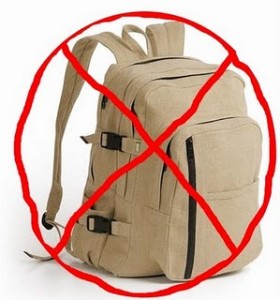
When visiting Museums and some of the Venetian Churches, including the Basilica of St. Mark’s, for security reasons you will be required to leave backpacks and large bags by their cloackroom (no charge).
______________________________________________________________________________________
Acqua Alta (High Water)
 From mid September to mid April the City is subject to floodings. You can’t say in advance how many time it’ll flood as every year is different. We can have 5 as well as 50 or more floods in a year.
From mid September to mid April the City is subject to floodings. You can’t say in advance how many time it’ll flood as every year is different. We can have 5 as well as 50 or more floods in a year.
The acqua alta has always been a natural feature in Venetian life. We have records of disastrous floods as early as in 1240, like this one, reporting that “Today the water was the height of a man above the streets”. Yet, in the last Century the problem has worsened and the phenomenum presents itself more and more often, expecially now that the Global Warming of the Earth makes the level of the waters rising.
It is a combination of seasonal tides and particular weather conditions that causes the Acqua Alta. The lagoon is connected with the Adriatic sea, and therefore the lagoon basin experiences two high tides and two low tides every day.
During high tide the sea flows in through the three port-mouths that provide access to the lagoon; then, during ebb tide it flows back out into the Adriatic, carring refuse with it. It is a southern, warm wind (scirocco) which alters the natural flowing of water. First it forces the water of the Adriatic sea through the three port-mouths and then its constant blowing prevents the water from flowing back out again. As Venetians, we have grown used to acqua alta. In our own way, we are organized. We have our rubber boots, an alarm which sets off and can be heard in the whole lagoon. And then all the gang-planks where people can walk on. If you happen to be in Venice with a flooding, don’t stop on the gang-planks to take pictures: they are the only way to get to work for many locals!
______________________________________________________________________________________
Shopping: Opening Hours
Usually from 9:00/9:30 am to 7:30/8:00 pm. Groceries close from 1:00 pm to 5:00 pm
______________________________________________________________________________________
Tax Free
Visitors from non-European countries can claim a tax refund on purchases that exceed 150 euros from the one shop. Most shop keepers will have the tax-refund forms. The form is to be stamped by the airport custom office and mailed upon leaving Europe. You can also get a cash refund (euros or US dollars) in Venice from the appropriate office, yet you will still have to stamp and mail the form from the airport (credit card guarantee is required)
______________________________________________________________________________________
Post Office and Stamps
The main Rialto Post Office is open Monday to Saturday from 8:10 am to 7:00 pm. Other Post Offices usually close at 1:30 pm. Stamps are also sold at tobacconists displaying a black-and-white bi “T” sign.
______________________________________________________________________________________
ATM Dispensers Cash
Cashpoints are plentiful all over Venice, usually outside bank premises, and allow you to withdraw money 24 hrs.
______________________________________________________________________________________
Credit Cards
All the mayor Credit Cards (Visa, MasterCard, American Express) are widely accepted in shops, hotels, restaurants.
VGB Blog
Nessun post trovato.
